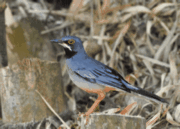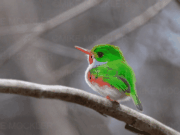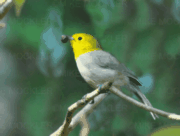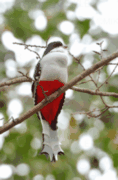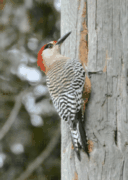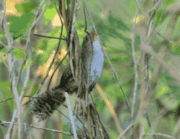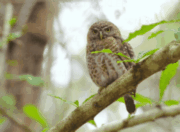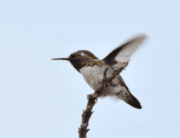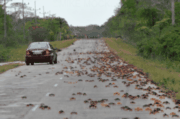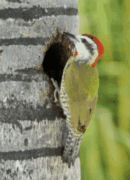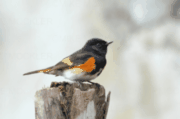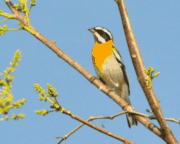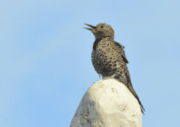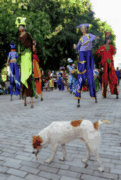|
Mike Mockler Cuba |
A visit Pat and I made to Jamaica highlighted the phenomenon of endemism, as described in my report of that trip in December 2010. Although a relatively small island, remarkably, Jamaica is home to 30 endemic bird species (ie. that are found nowhere else in the world), although it’s fair to point out that two of those species are very rare, possibly extinct. Having enjoyed Jamaica, we decided to visit the much larger island of Cuba which also boasts many endemics, currently 25 in total. As in Jamaica, our intention was to explore all aspects of Cuba and to enjoy all the birds we might see, whether or not they were endemics and would not lament “missed” species. In fact, as we later discovered, the majority of the endemics were relatively easy to see. Havana Most local people seemed poorer than in many Caribbean islands but they had friendly smiles and cheerful faces. Sometimes, however, these smiles were used to persuade you to take a ride in their taxi or horse and trap or to buy some of their wares. Tourism is certainly alive and kicking in this city, despite the country’s political system. Hawkers, musicians and street entertainers are abundant: Cuba has no shortage of smart entrepreneurs! The crowded streets of a busy city rarely support a great wealth of wildlife and Havana is no exception. However, small parks and gardens provided sightings of Northern Mockingbird, Mourning Dove, Palm Warbler, Greater Antillean Grackle and the handsome Red-legged Thrush, the first of our Cuban endemics. Near the harbour, Magnificent Frigatebird, Brown Pelican, Little Blue Heron and Cuban Martin put in appearances. La Guira National Park Other birds we saw in the area included Cuban Tody, Cuban Trogon, Cuban Emerald (the larger of Cuba’s two hummingbirds), Cuban Bullfinch, the lovely Yellow-headed Warbler, Cuban Grassquit and Cuban Solitaire, all of them endemics. We also encountered West Indian Woodpecker, Loggerhead Kingbird, Red-tailed Hawk, Red-legged Honeycreeper, Olive-capped Warbler, Yellow-bellied Sapsucker and several American migrant warblers. Zapata Swamp National Park In nearby woodland, we had very good views of many endemics, among them Cuban Pygmy Owl, Cuban Screech-Owl, Cuban Pewee, Fernandina’s Flicker, Grey-headed Quail-dove, Blue-headed Quail-dove and the minute Bee Hummingbird. The Bee Hummingbird is the world’s smallest bird and, as its name suggests, could be mistaken for a large bee. Unlike the larger and more abundant Cuban Emerald, the Bee Hummingbird is, sadly, in decline, the reasons for which are not known. So it was a treat to watch a breeding male zooming around at high speed, furiously displaying to a tiny female. Grey skies and dull light made it impossible to capture the colours of this little gem on camera but we were grateful to our excellent naturalist guide, Maydiel Morera, for taking us to the right place - and for his pleasant company throughout our stay. Around Zapata we witnessed an extraordinary phenomenon. Land crabs breed inland but, once a year, the females walk to the beaches to lay their eggs in the sea and all the males converge on the shore so they can mate with the females and fertilize their eggs. There were thousands upon thousands of these crabs heading to and from the beaches, so much so that, in places, coastal roads were completely covered with them. Most drivers did their best to avoid crushing them but the numbers were such that there were many hundreds of fatalities. Trinidad Birds are few and far between in Trinidad but there are plenty of photogenic, elderly but colourful cars. As in Havana, virtually all of these are American models but one was English - a little Austin A35, dating back to the mid 1900s. Coincidentally, way back in the mists of time, the first car we owned was an Austin A35! The Northern Cays However, these habitats - coastal scrub, mangroves, mudflats and lagoons - are fast disappearing in the face of massive tourist development as huge beach resorts are constructed at an alarming rate reminiscent of the worst excesses of the Spanish costas in their boom years. Many bird species are dependent on these habitats, especially migrating birds and some endemics. With relations between the USA and Cuba rapidly improving, a huge surge in beach tourism is expected and, with it, yet more large-scale destruction of these important habitats. I hope the Cuban government will act to preserve its native flora and fauna.
|
|
